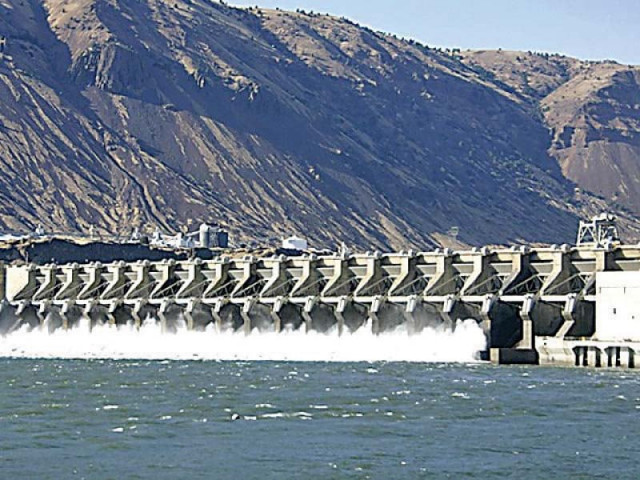IRSA body calls for building two mega dams as crisis deepens
Sees 31% water shortage in early Kharif sowing season

Representatives of the Pakistan Meteorological Department and Wapda revealed that snow coverage was about 50% less in catchment areas in the country. PHOTO: FILE
The Irsa committee, which met on Thursday, projected 31% water shortage in early Kharif sowing season because of heavy wastage and less inflows into rivers.
Punjab and Sindh - the two major food crop growing provinces and big consumers of water - will face 31% water shortage whereas Balochistan and Khyber-Pakhtunkhwa will be exempt from the impact of water scarcity during the Kharif season.
However, water shortage in late Kharif will come down to 10% for both Punjab and Sindh.
A representative of the Water and Power Development Authority (Wapda) told the committee that sedimentation level in Tarbela and Mangla dams was increasing which would reduce the water storage capacity of the two major reservoirs.
Water supply from Khanpur Dam restored
“Wapda will present a case to Irsa for further increasing the minimum operating level of Mangla Dam from 1,050 feet to 1,060 feet in the next 15 days,” he said.
During the meeting, it was emphasised that Pakistan was experiencing a crisis-like situation and more dams should be constructed to stave off the threat. All provinces, including Sindh, endorsed the proposal for building new water reservoirs.
Representatives of the Pakistan Meteorological Department and Wapda revealed that snow coverage was about 50% less in catchment areas in the country.
Some key crops of the Kharif season, which runs from April 1 to September 30, are rice, sugarcane, cotton and maize.
It was anticipated that river inflows would be 95.12 million acre feet (maf) in the Kharif season compared to 107 maf in the previous year. Of this, 22.58 maf would be in early Kharif whereas 72.54 maf would be in late season.
Only 76% of allocated funds spent on water projects
Water losses on the Indus River were estimated at 17.36% during the sowing season.
Total water availability for crop plantations in the season has been estimated at 62.02 maf. Of this, the share of Punjab has been projected at 30.24 maf, Sindh 27.96 maf, Balochistan 2.99 maf and Khyber-Pakhtunkhwa 0.823 maf.
In early season, 13.764 maf will be available whereas 48.256 maf will be supplied in late Kharif.
Meeting participants also discussed water supply for Rabi crops from October 1, 2017 to March 29, 2018. Total shortage had been anticipated at 33% during the ongoing Rabi sowing season with water availability at 36.17 maf.
Punjab had been expected to face 35% shortage, Sindh 34%, Khyber-Pakhtunkhwa 26% and Balochistan 7% during the season.
The advisory committee meeting was held under the chairmanship of Irsa chairman and attended by representatives of Wapda and all provinces.
Published in The Express Tribune, March 30th, 2018.
Like Business on Facebook, follow @TribuneBiz on Twitter to stay informed and join in the conversation.



















COMMENTS
Comments are moderated and generally will be posted if they are on-topic and not abusive.
For more information, please see our Comments FAQ